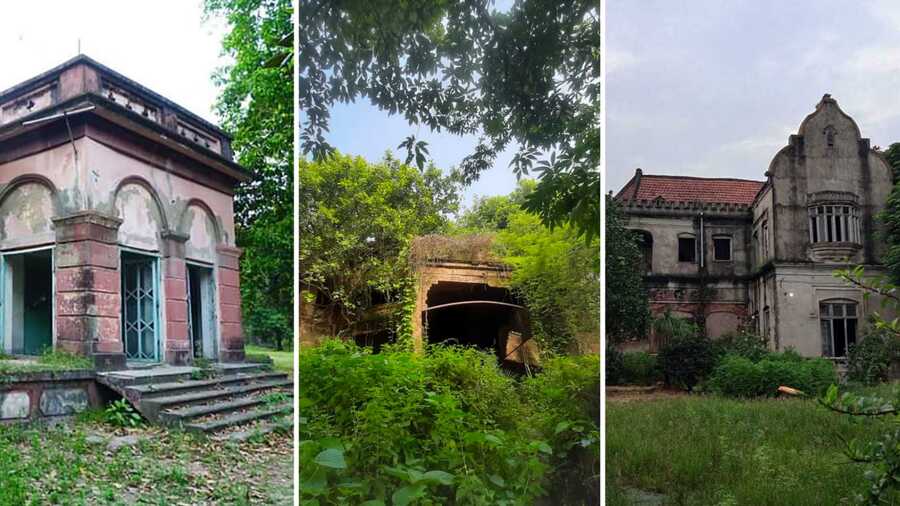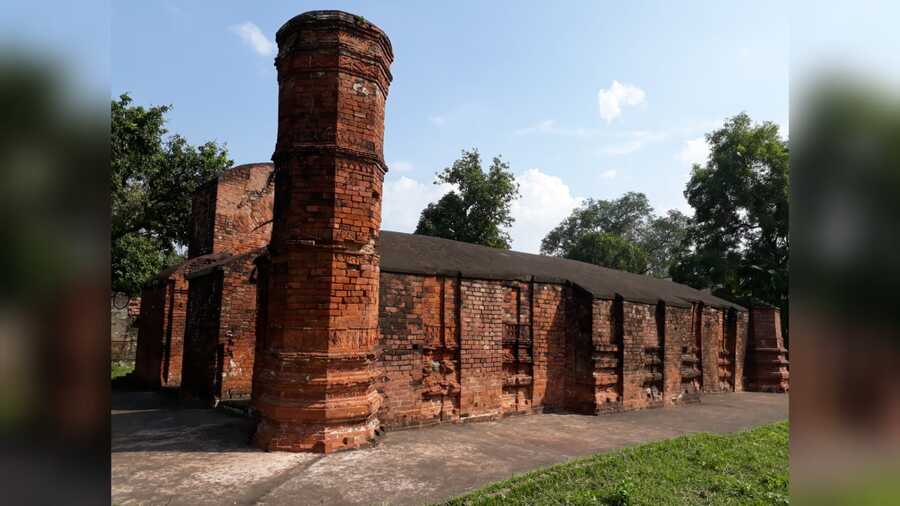The Grand Trunk Road saunters through the old settlements of Bally, Uttarpara and leads on to Konnagar, where glimpses of the grey Hooghly river peek between the old houses on the banks. The dusty and chaotic lanes of this small suburban town belie a storied past, traces of which are tucked inside mansions — ruined and standing — by the riverside.
Konnagar’s Tagore connection
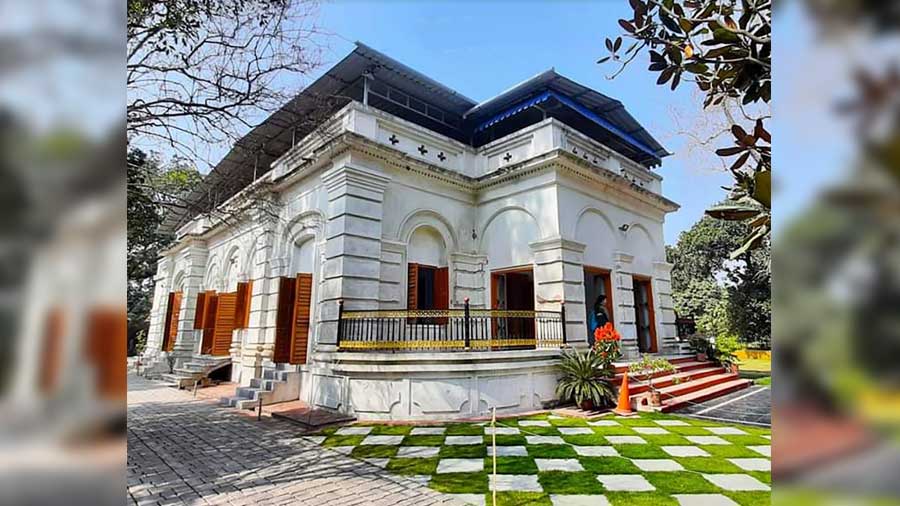
The restored Konnagar ‘bagan bari’ that belonged to the Tagore family Arunava Sanyal
One of these riverside manors finds mention in Abanindranath Tagore’s delightful memoir, Jorasakor Dharey.
Abanindranath — like his more illustrious uncle Rabindranath — dabbled in many branches of art but is remembered as the father of the Bengal school of painting. The artist extraordinaire drew his first sketches in the sprawling villa owned by his father Gunendranath Tagore in Konnagar.
The Konnagar bagan bari, as it was fondly referred to by members of the Tagore family, was abandoned overnight after the sudden and untimely demise of Gunendranath in 1881. Over the century and half, the villa changed ownership a few times and its link with the Tagore family was all but forgotten. A chance visit by eminent parliamentarian Pratap Chandra Chunder brought it under the aegis of the West Bengal Heritage Commission in 2007.
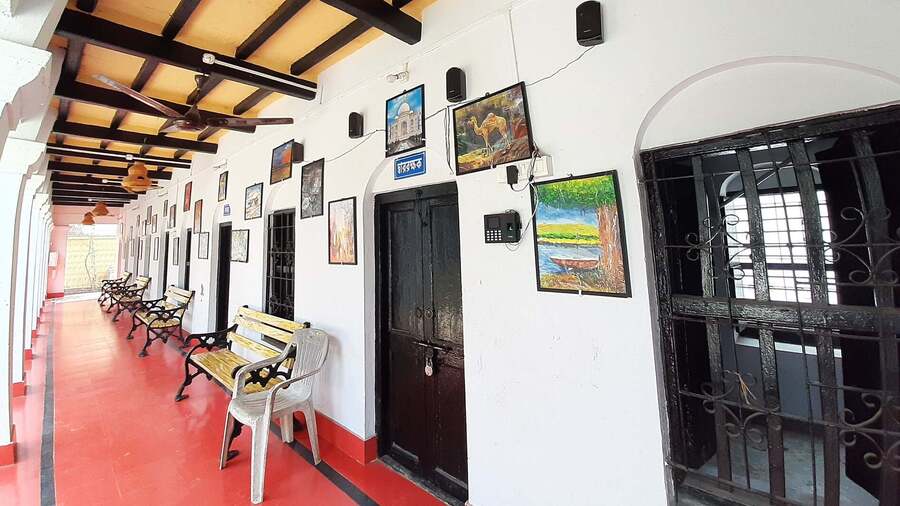
The restored mansion of Abanindranath Tagore is now open to the public konnagarheritage/Facebook
A strategic restoration drive by the local municipal board has protected the precincts from real estate development and the home is now open for public viewing. Architects and heritage enthusiasts could argue that the renovation could have been done without depleting the green cover of the bungalow and changing the original brick-red colour to a postmodern white. However, this has been a painstaking effort to bring back a slice of history that was lost to time.
India’s beloved shoes, made in Konnagar
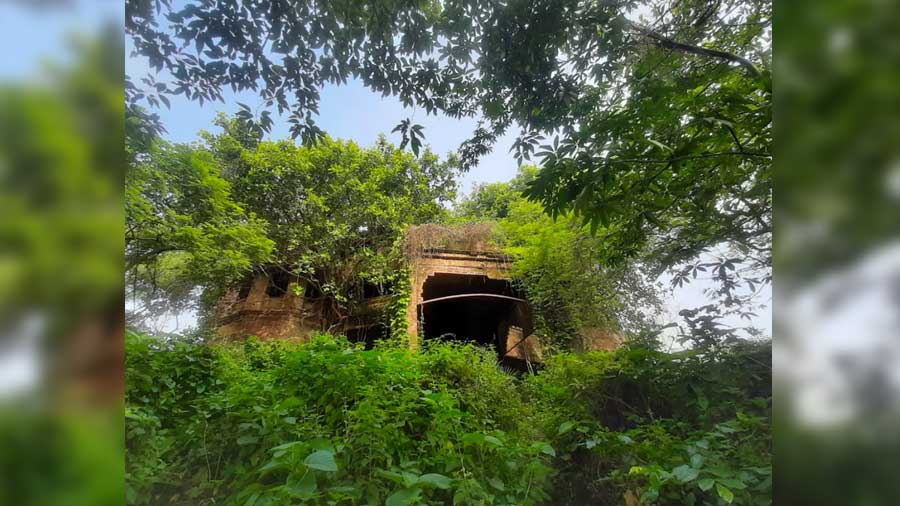
The abandoned managerial bungalow of the Bata factory of Konnagar Arunava Sanyal
India’s first Bata factory has not been as lucky. The Czech footwear brand, which has one of its largest markets in India, set up its first factory in the country along the Hooghly river in 1932. It is not commonly known that the Konnagar factory was the first in India, before the company moved to Batanagar five years later.
A motley band of ‘Batamen’ from then Czechoslovakia started the India operations of one of the largest shoemakers of the world in a derelict oil mill compound on the river bank. A year later, the first Bata plimsoll shoe, made from locally-sourced leather, would come out of the Konnagar workshop branded with a ‘Made in India’ tag. With impeccable quality and a lower price point than the imported Japanese shoes that monopolised the Indian footwear market at that time, these shoes would see the business flourish in the next two years with effects trickling down to the local economy.
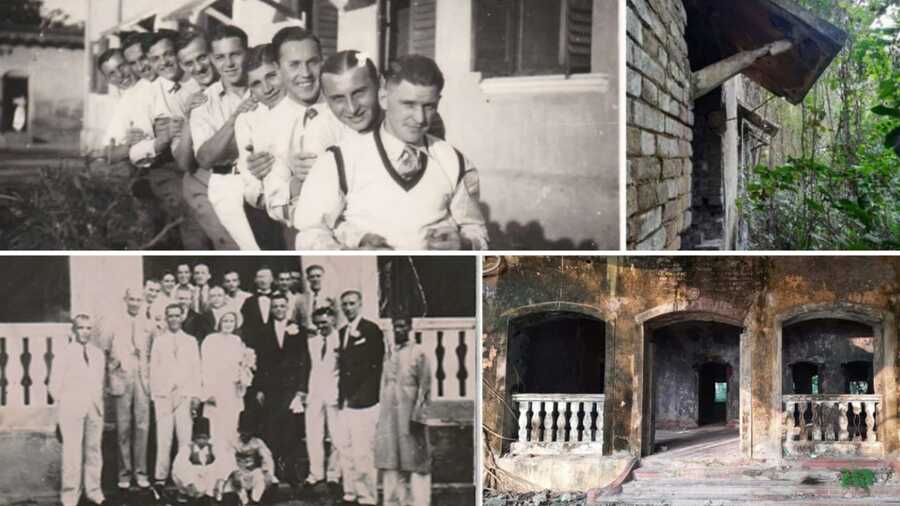
It is not widely known that India’s first Bata factory was set up in Konnagar in 1932 before moving to larger premises in Batanagar five years later Olek J Plesek, Helene Giglietti Staroba and Arunava Sanyal
The first Indian retail outlet opened in Konnagar in 1933 and the busy crossing where it stood is still known as Konnagar Bata more. On a leisurely boat ride on the Hooghly, one can spot a dilapidated mansion towering above a thich over of overgrown vegetation beyond a decrepit, brick-laid ghat few kilometres from Panchu Dutta Ghat. This was the residential bungalow of the first Czech managers of the Konnagar Bata factory.
Haywards beer and the Lal Kuthi of Konnagar
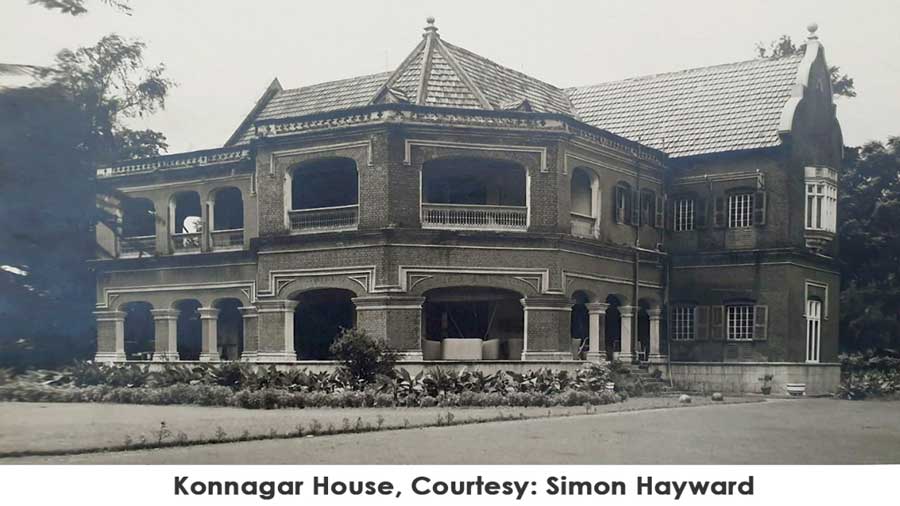
The Konnagar House built by Devon-born British chemist William Risdon Criper konnagarheritage/Facebook; Simon Hayward
The main arterial road that connects Konnagar’s railway station to the Grand Trunk Road was named after William Risdon Criper, a Devon-born British chemist who lived and worked in the town for more than four decades at the turn of the 20th century.
Criper built a sprawling bungalow on the river banks of Konnagar, a stone’s throw away from his factory that produced red lead, sulphuric acid, and other industrial chemicals. Built on a leased plot of over four hectares, his European-style stately home — known as Konnagar House, The Red House or Lal Kuthi — featured a well-stocked library, a billiard room, conference hall, tennis court, croquet lawn and a private jetty. The businessman was popular with the townsfolk for his philanthropic ways.
Arunava Sanyal, a young architect and a member of Konnagar Aitijhya Parishad, who has been looking into the history of Konnagar House, stumbled upon an interesting connection between the century-old bungalow and the Indian-born Haywards liquor brand.

The Konnagar House boasted of an expansive library, a billiard room, conference hall, tennis court, croquet lawn and a private jetty konnagarheritage/Facebook; Simon Hayward
Along with his prosperous chemical business, William Criper also started Bengal Distilleries Co. Ltd. and invited his nephew Eric Hayward from London to join his business in Konnagar in 1904. Over the next few years, the Haywards brand carved out an identity in the liquor market with the finest quality dry gin, cane rum and malt whisky. Firpo’s, Kolkata’s best-known fine-dining establishment, used to serve their luncheon with craft cocktails whipped up with Hayward’s Gin.
In the post-independence years, Bengal Distilleries continued its success story until 1958 when Eric’s son Anthony Hayward merged his father’s business with the British beverages powerhouse Shaw Wallace. Tony, as he was fondly referred to in Kolkata’s club circles, settled in England after his retirement but would regularly return to Kolkata in the next three decades of his life.

Konnagar House as it looks now Arnab Banerjee
Both the factory and the bungalow changed hands a few times and Konnagar House is presently owned by a Kolkata-based agrochemical firm that uses the bungalow as a warehouse and soil testing facility. A memento of the interconnected legacy of Konnagar and Haywards is kept alive in Goa. Two of Tony Hayward’s children, Charlotte and Simon, have a boutique hotel and the best suite is named ‘Konnagar’ in fond memory of the beautiful house their great grand “Uncle Bill” built over a century ago.
Sugato Mukherjee is a Kolkata-based photographer and writer whose work has appeared in The Globe and Mail, Al Jazeera and Nat Geo Traveller, among other places. He is the author of a coffee-table book on Ladakh and a book on the sulphur miners of East Java.
